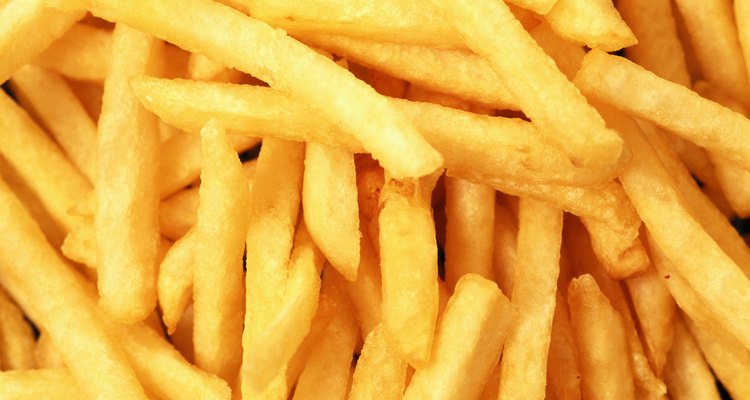
Professional cooks do a number of things differently from home cooks, because they have to assemble meals under tremendous time pressure. That means a lot of advance preparation, to ensure foods cook quickly and evenly while retaining the best possible quality. Many of those techniques can be used at home, and for the same reasons. One of the most useful is blanching, which can be either water-based or oil-based.
Blanching
Blanching can mean several things in the kitchen, but typically it refers to cooking foods briefly for a specific purpose. The term literally means "whitening," and that's the effect of some forms of blanching. For example, when you blanch almonds, you simmer them briefly, then rub them between towels to remove their brown skins and reveal the pale nut. Blanching in hot water has the opposite effect with green vegetables, intensifying their natural color. Produce that's bound for the freezer is usually blanched for a few minutes in steam or hot water, which kills enzymes that would otherwise cause spoilage.
Oil Blanching
Although most blanching is done in water or steam, that's not the only option. In some cases, oil is used as well. Although it's in liquid form, oil contains no water or moisture. That means cooking in oil is considered a "dry-heat" method, which avoids leaching out water-soluble vitamins or pigments from the foods. It's usually done at relatively low temperatures, so it doesn't have the effect of frying foods. It's a gentler form of cooking, often equivalent to poaching in oil. The food that's most often oil-blanched is french fries, but the technique is also used with meats, fish and poultry.
Blanching French Fries
Turning a damp, starchy potato into a crisp and golden french fry is harder than it appears to the casual eye. The first step is usually soaking the cut potatoes in water to remove any excess starches and sugars that might make the fries brown too rapidly. If the water is icy-cold, it helps stiffen the potatoes' cell walls and make a crispier fry. After the potatoes are drained, they are cooked in a low-temperature deep fryer. Most restaurants blanch their fries at about 300 degrees Fahrenheit, although it varies depending on the type of potato and the chef's preference. They are done when they're still pale, but limp and cooked. When the blanched, cooled potatoes are later fried at 360 degrees F to 375 degrees F, they'll be perfectly crisp and golden.
Oil-Blanching Meats and Vegetables
Oil-blanching is commonly used to prepare meats, fish, poultry and occasionally long-cooking vegetables for stir-frying in a wok. With meats, the technique gives a characteristically soft texture, and it's referred to as "velvetizing." The meats are first dredged in cornstarch and marinated, giving each small piece a thin coating of batter. Then they're immersed in barely hot oil and quickly heated to about 300 degrees F. That cooks the meats gently until they're just white. Later, when they're added to a very hot wok, they'll crisp and finish cooking almost immediately. Vegetables aren't coated but are par-cooked about halfway in lower-temperature oil. After draining and cooling, they can be quickly finished in the hot wok with other, quicker-cooking ingredients.
Related Articles

Preparing Homemade French Fries to Cook ...
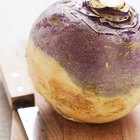
How to Cook French-Fried Turnips
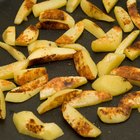
How to Sautee Potatoes

The Best Potatoes For Shredded Hash ...

How to Soak Potatoes Before Frying
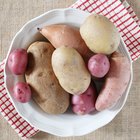
List of Different Types of Potatoes
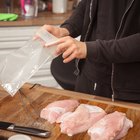
What Are the Dangers of Boiling Food in ...

What Keeps Shredded Potatoes From ...
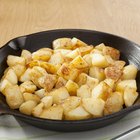
Can I Freeze Cubed Root Vegetables?

Recipes for Enameled Cast Iron Cookery
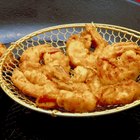
Deep-Frying Using All-Purpose Flour

Blanching Meat

How to Cook Fried Drummettes

How to Dehydrate Okra

How to Cook Frozen Cassava
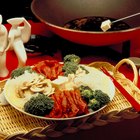
Does Deep-Frying Vegetables Rob Them of ...

Can You Fry a Yukon Gold Potato?

How to Deep Fry Vegetables With Batters
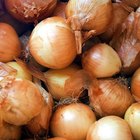
Blanching An Onion
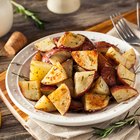
Easy Way to Cook Roasted Red Potatoes
References
- On Food and Cooking: The Science and Lore of the Kitchen; Harold McGee
- Professional Cooking; Wayne Gisslen
- Starchefs.com: Techniques -- Blanching in Oil
Writer Bio
Fred Decker is a trained chef and prolific freelance writer. In previous careers, he sold insurance and mutual funds, and was a longtime retailer. He was educated at Memorial University of Newfoundland and the Northern Alberta Institute of Technology. His articles have appeared on numerous home and garden sites including GoneOutdoors, TheNest and eHow.
Photo Credits
David De Lossy/Photodisc/Getty Images